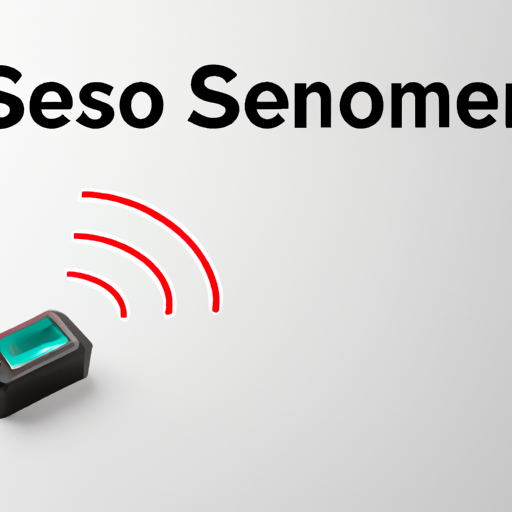Sensors are an essential component of many modern devices and systems, playing a crucial role in detecting and measuring various physical phenomena. From smartphones to cars to industrial machinery, sensors are used in a wide range of applications to provide valuable data that helps improve efficiency, safety, and performance.

Types of Sensors
Sensors come in many different types, each designed to detect specific types of physical phenomena. Some of the most common types of sensors include:
1. Temperature sensors: These sensors measure the temperature of an object or environment and are used in a wide range of applications, from climate control systems to industrial processes.
2. Pressure sensors: Pressure sensors measure the pressure of a gas or liquid and are used in applications such as monitoring tire pressure in cars and controlling the flow of fluids in industrial processes.
3. Motion sensors: Motion sensors detect movement and are commonly used in security systems, automatic doors, and gaming consoles.
4. Light sensors: Light sensors measure the intensity of light and are used in applications such as automatic lighting systems and camera sensors.
5. Proximity sensors: Proximity sensors detect the presence of an object without physical contact and are used in applications such as touchscreens and object detection systems.
Working Principles of Sensors
Sensors work by converting a physical phenomenon, such as temperature, pressure, or light, into an electrical signal that can be processed and analyzed by a device or system. The working principle of a sensor depends on its type and the physical phenomenon it is designed to detect.
For example, temperature sensors typically use a thermocouple or a thermistor to measure temperature by detecting changes in electrical resistance. Pressure sensors, on the other hand, use a diaphragm or a piezoelectric crystal to measure pressure by detecting changes in mechanical deformation.
Light sensors use a photodiode or a phototransistor to measure light intensity by detecting changes in electrical current. Motion sensors use a variety of technologies, such as infrared or ultrasonic sensors, to detect movement by measuring changes in the reflected signal.
Proximity sensors use technologies such as capacitive or inductive sensing to detect the presence of an object by measuring changes in electrical capacitance or inductance.
Applications of Sensors
Sensors are used in a wide range of applications across various industries, providing valuable data that helps improve efficiency, safety, and performance. Some of the most common applications of sensors include:
1. Automotive industry: Sensors are used in cars to monitor engine performance, control airbag deployment, and assist in parking and collision avoidance systems.
2. Healthcare industry: Sensors are used in medical devices to monitor vital signs, track patient movement, and assist in surgical procedures.
3. Industrial automation: Sensors are used in manufacturing processes to monitor equipment performance, control robotic systems, and ensure product quality.
4. Environmental monitoring: Sensors are used to monitor air and water quality, detect pollution, and track weather patterns.
5. Consumer electronics: Sensors are used in smartphones, smartwatches, and other devices to enable features such as touchscreens, motion detection, and biometric authentication.
Advancements in Sensor Technology
Advancements in sensor technology are driving innovation across various industries, enabling new capabilities and improving existing systems. Some of the latest advancements in sensor technology include:
1. Internet of Things (IoT): Sensors are a key component of IoT systems, enabling devices to communicate and share data over the internet. IoT sensors are used in smart homes, smart cities, and industrial IoT applications to monitor and control various systems remotely.
2. Artificial intelligence (AI): AI-powered sensors are capable of analyzing complex data patterns and making intelligent decisions in real-time. AI sensors are used in autonomous vehicles, predictive maintenance systems, and other applications that require advanced data processing capabilities.
3. Wearable sensors: Wearable sensors are becoming increasingly popular in healthcare and fitness applications, enabling users to monitor their health and activity levels in real-time. Wearable sensors can track heart rate, sleep patterns, and physical activity, providing valuable insights for improving overall health and wellness.
4. Environmental sensors: Environmental sensors are used to monitor air and water quality, detect pollution, and track weather patterns. Advanced environmental sensors can detect a wide range of pollutants and provide real-time data for environmental monitoring and management.
5. Quantum sensors: Quantum sensors are a new class of sensors that leverage the principles of quantum mechanics to achieve unprecedented levels of sensitivity and accuracy. Quantum sensors are used in applications such as navigation systems, gravitational wave detection, and magnetic field mapping.
In conclusion, sensors are a critical component of modern devices and systems, enabling the detection and measurement of various physical phenomena. With advancements in sensor technology driving innovation across industries, the future looks bright for sensors and their applications. Whether it's improving efficiency in manufacturing processes, enhancing safety in automotive systems, or monitoring environmental conditions, sensors play a vital role in shaping the world we live in.





